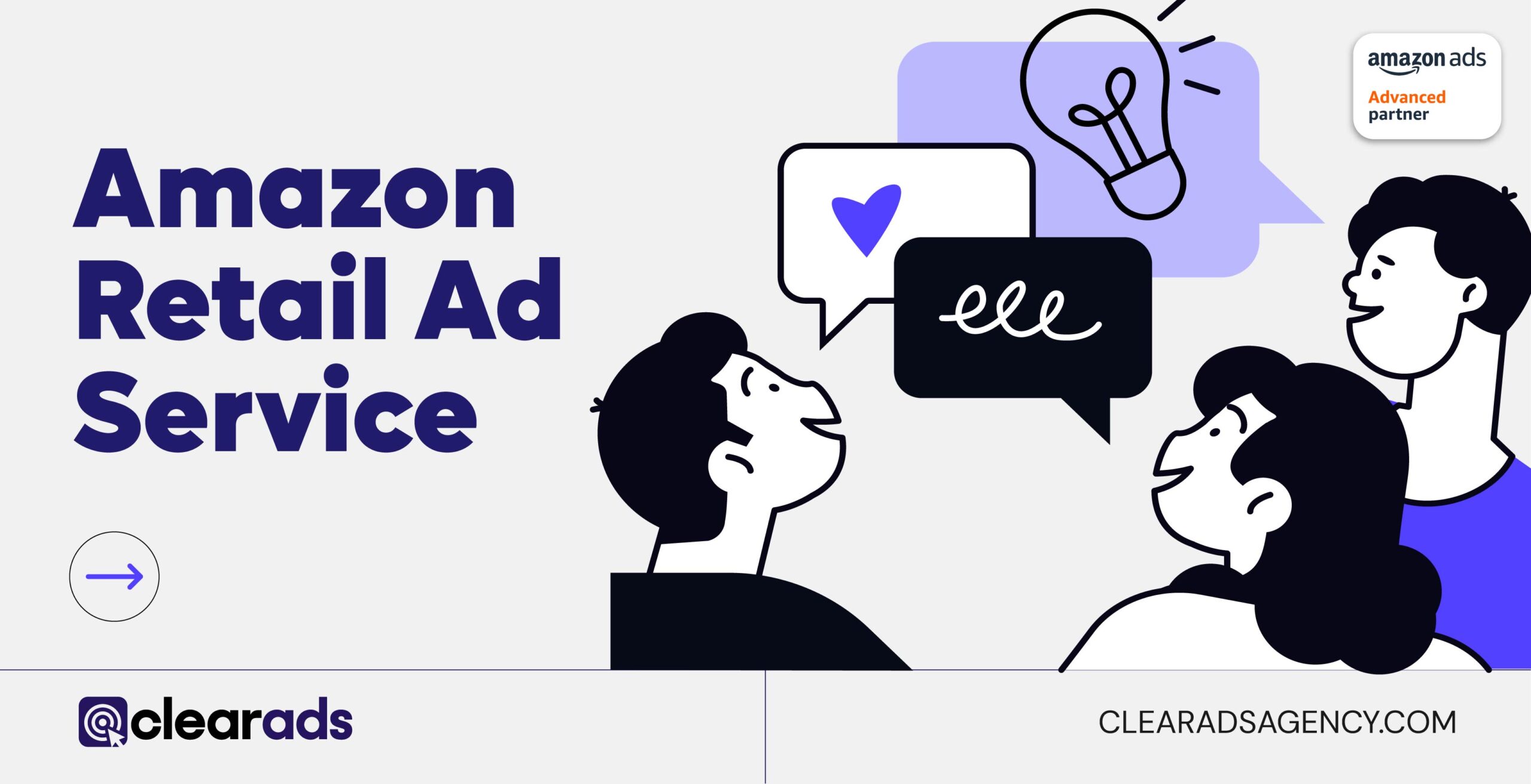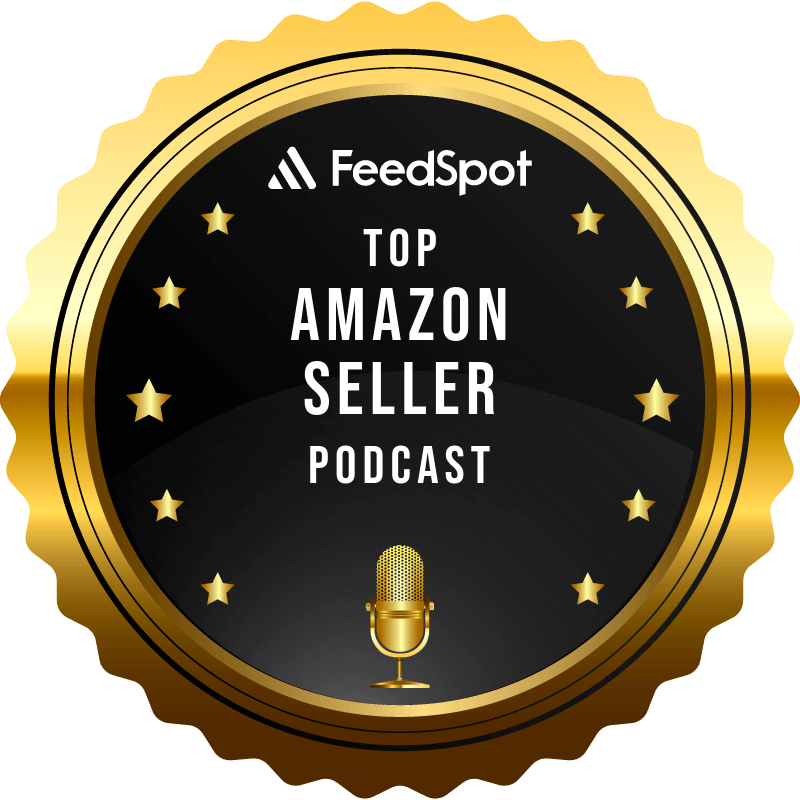At Amazon’s 2022 Accelerate conference, a wide range of new tools, features, and functions were announced to help sellers attract, engage, and delight even more audiences through the e-commerce platform.
The event highlighted how 2023 is already shaping up to be an exciting period for sellers, with Amazon confirming rumors that its Premium A+ Content (which enables sellers to enhance their listings), will be rolled out to all brands worldwide.
However, one of the most interesting announcements related to an expansion of the customer engagement tool Amazon launched in 2021. With functionality extended, eligible sellers will now be able to utilize a new email marketing feature.
What is Amazon Email Marketing?
Launched in September 2022 and expected to be rolled out in earnest throughout 2023, Amazon email marketing is a new way for Amazon sellers to connect more closely with their customers through the creation of email marketing campaigns.
The new feature forms part of Amazon’s 2021 customer engagement tool known as Manage Your Customer Engagement. It was developed to help sellers derive even more value from their Amazon Storefronts by boosting engagement, customer retention, and loyalty. As a continuation of that, the email marketing feature, which has been launched with the title ‘Tailored Audiences’, will enable sellers to directly communicate with some audiences via customized, personalized emails.
To date, Amazon email marketing enables sellers to send messages to:
1. Repeat customers
Sellers can send tailored emails to customers who have purchased products from their brand on at least two separate occasions in the previous 12 months.
2. High spend customers
Sellers can send tailored emails to customers in the top 25% of the brand’s biggest spenders over the last 12 months. Spending can be spread across multiple orders.
3. Recent customers
Sellers can send tailored emails to customers that make up the brand’s top 20% of most recent orders. This list will automatically be renewed after each new order is received.
Regardless of which audience segment is being targeted, emails can be customized with a supporting image, supporting products, and the brand’s logo.
Now, if you’re reading this and thinking ‘hasn’t email marketing been available to Amazon sellers for some time?’ then you’d be right. Email marketing was first launched back in 2021 when the customer engagement tool was initially introduced.
However, previously, sellers were only able to send emails to the brand’s followers or subscribers. This means messaging was restricted to those that had explicitly signed up to receive news and updates from the brand.
Tailored Audiences is the first Amazon feature to allow sellers to send zero-cost email communications to those that have purchased from the brand.
At the Accelerate conference, Amazon noted that the development of Tailored Audiences was sparked by one of the biggest frustrations experienced by today’s sellers. It’s a recognition that while Amazon has evolved into a powerful awareness platform, it’s significantly lacking in critical lead nurturing and relationship building functionality.
The roll out of Tailored Audiences is the first step in addressing this issue and reducing the frustration felt by Amazon sellers. While sellers may previously have found Amazon’s platform beneficial when it came to acquiring new customers, they should now find it simpler to also enhance the long-term loyalty and customer lifetime value of those customers.
Does Amazon Email Marketing Work?

The saying ‘email is dead’ has been around for years. There’s a reason for that. Today’s buyers want real-time interactions. They don’t want to wait around for an email to be received, opened, read, and then responded to. They want instant gratification by communicating through chatbots, video, or on social media.
Yet despite this, the number of active email users around the world is growing. Today, it’s estimated that there are 4.14 billion email users globally and, believe it or not, email consistently ranks as the best marketing method for return on investment (ROI). Today, for every $1 spent, the average is now over $40 back in ROI.
The question is… why? Why is email marketing performing so well – unexpectedly well you could say- at a time when email is supposedly dead? The answer relates to the flywheel.
Until recently (and even today, in some cases) businesses have been using the sales funnel. We’ve all seen it. We’re all familiar with it. The sales funnel shows that many people enter the funnel at the top, in the awareness stage. A selection of those people moves down into the consideration stage, and few move onto the final stage: decision. After making a purchase, they drop out of the bottom of the funnel.
This is how it’s long been done. Except in doing so, you’re losing one of your most valuable assets: your satisfied customers who could be doing more for your brand.
That’s why many businesses are transforming the funnel into a flywheel. It’s a continuous loop with no definitive beginning and end and, more importantly, nowhere for satisfied customers to fall out.
With the flywheel, former customers remain in the loop. This helps them to maintain a relationship with the brand and feel a connection to the brand. They can also use their experience to influence and attract new customers.

This is where Amazon email marketing comes in. With an ability to directly communicate with three types of customers, sellers can work on strengthening relationships with those who would have previously fallen out the bottom of the funnel. These customers are true assets because you know they’re already invested in your brand. Targeting this segment is key to boosting sales, revenue, and profit.
When Amazon first announced Tailored Audiences, some were quick to raise concerns that Amazon buyers would suddenly receive hundreds of emails from different brands they’ve bought from. The fear was this would result in frustration and an unwillingness to purchase from those brands in the future. While this is certainly worth thinking about, Amazon has promised sellers it’s taking measures to ensure that won’t happen.
How? Firstly, Amazon email marketing won’t allow sellers to send more than one email campaign per brand per week. This limits the number of communications that buyers will receive. Secondly, Amazon allows buyers to opt out of emails if they wish to do so.
Benefits of Email Marketing for Amazon

If you’re selling your products on Amazon and are already seeing impressive results, you may be wondering why Amazon email marketing matters. Here are just a few of the benefits that sellers can expect see when using this tool:
Get new customers
While Tailored Audiences only allows sellers to communicate directly with previous buyers, the ability to maintain a relationship with these buyers can have a huge impact on your new-to-brand customer rate.
When buyers have enjoyed a positive experience, they share this experience, and they tell their friends and followers. Happy customers who feel connected to a brand can be powerful influencers, ambassadors, and advocates, helping you to strengthen your customer base.
Increase sales
Customers who have previously purchased from a brand are the ideal target for promoting new products, highlighting bestsellers, or more. Why? Because they’ve already shown that they’re willing to act, which is half the battle in an ecommerce environment. Therefore, it makes sense to target this category, and use Amazon email marketing to boost sales amongst this group. It can be more effective than targeting new customers who may – or may not – be willing to act.
Build your reviews
Review requests are one of the most popular types of Amazon emails (we’ll explore this, and other email types, later). These emails can help you to build up a stronger and more prominent review profile on Amazon. This in turn can serve to guide potential customers on their buying journey. It’s reported that 95% of customers read reviews before making a purchase, so the ability to showcase customer feedback is critical to success. Even negative reviews are a chance to demonstrate good customer service.
Retargeting
One of the biggest advantages of launching email campaigns through Amazon is that there’s already a pre-built record of what every customer has purchased. This means that sellers can use Amazon email marketing to retarget specific customers who have demonstrated an interest in a particular product type or product category. For example, if a customer has purchased a dog bed, sellers can retarget this buyer with emails for related products, such as dog toys and grooming items.
Increase brand loyalty
Even if a previous customer doesn’t respond or react to an email by making another purchase, there’s still value in nurturing relationships with them. It’s a chance to maintain a connection, and build a stronger, longer lasting relationship with them.
Keeping in touch is also a great way to maximize brand loyalty. Having a pool of loyal customers can generate free word-of-mouth advertising and give brands a significant advantage over the competition. This is essential in a saturated marketplace.
Types of Marketing Emails

Wondering what sort of emails you could send through Amazon email marketing services? Here are a few examples that could prove valuable for Amazon sellers:
1. Welcome emails
While welcome emails are typically sent following an individual’s first interaction with a brand – such as signing up for a newsletter – Tailored Audiences only allows sellers to communicate with previous customers. This means that Amazon’s welcome emails are sent following a buyer’s first purchase from the brand. This type of email is designed to introduce the brand and can also highlight product bestsellers. The average open rate for welcome emails is 86% higher than for other emails.
2. Reviews emails
Amazon’s integrated ‘Request a Review’ feature allows sellers to send emails asking their buyers if they’d be willing to leave feedback relating to the product, or to the service they received from the brand. Sellers can request a review once per order, anywhere from 5-30 days after the date of purchase. However, currently, this must be done manually, which is causing a bit of frustration for sellers. The good news is that it’s possible to automate review requests. We’ll explore that in more detail later.
3. Birthday emails
Birthday emails usually include a ‘treat’ of some kind, such as a discount code, and are sent to customers to celebrate their date of birth. Now, as Amazon considers buyers of third-party seller products to be Amazon customers, rather than direct brand customers, the platform doesn’t share this sort of information. But if you’re marketing your products off-Amazon, such as via your own website, you can collect this data independently and use it to engage with audiences on special days.
4. Thank you emails
A thank you email can be sent to all three of the Tailored Audiences subcategories – recent customers, high spending customers, and repeat customers. You can use this type of email to acknowledge their purchase and thank them for supporting your business.
Thank you emails show a customer that they’re valued, which can go a long way towards increasing brand loyalty. They can also help to nurture a powerful pool of individuals who are willing to leave reviews, promote your products, and advocate for your brand and business.
Amazon’s Marketing Tools

Amazon is still finding its feet with its email marketing capabilities, so don’t expect to find a fully comprehensive communications platform built into your Seller Central dashboard just yet.
What you can expect, however, is a selection of email marketing features which can help you to better nurture your most vital B2C relationships.
To date, Amazon offers:
- Customer segmentation: Sellers can categorize their customers into three distinct groups based on sales history and interactions with the brand. This ensures that each group receives the most relevant communications, designed specifically to meet their needs.
- Email personalization: Amazon allows sellers to personalize customer emails with the addition of images, associated products relevant to the customer, and a brand logo. This goes a long way towards crafting communications that connect with and engage the recipient. Personalization can boost loyalty and strengthen relationships.
- Email templates: There are a range of pre-designed email templates to choose from within Amazon, so it’s possible to send professional-looking emails even if you have absolutely zero design experience. These templates can help you to keep your communications consistent and familiar.
- Performance monitoring: You can run reports to track the performance of all Amazon-sent emails. Metrics include open rate, click through rate, opt-out rates, and delivery rates. Sellers can also see which emails have resulted in conversions or sales.
With Amazon’s focus for 2023 and beyond appearing to shift from awareness to loyalty and customer retention, it’s expected that these features will be expanded soon. Amazon has already announced plans to introduce new templates in the coming months, along with enhanced design capabilities that will allow sellers to use custom HTML content to improve the appearance of emails.
Creating a Strategy

As with any other form of digital marketing, it’s important not to jump into Amazon email marketing without developing a strategy that’s going to take you from where you are now to where you need to be. Without a strategy, there’s no roadmap to success, and it can be all too easy to start heading off in the wrong direction. When you know what needs to be done – and when – you’re more likely to see better results.
However, there’s not one single strategy that’s going to work for every Amazon seller. What works for one may not work for another. That’s why it’s always a good idea to develop your own strategy built around the goals you have for your own brand.
Consider what your aim of email marketing is. Is it to acquire new customers? Drive more traffic to your Amazon listings? Increase sales? Boost brand awareness? Generate more repeat business? Whatever your goal, use this as the foundation of your approach, and develop campaigns that align with this ultimate end goal.
Amazon Email Marketing Strategies
Some of the best Amazon email marketing strategies combine both on-Amazon and off-Amazon efforts to create high performance campaigns that are super effective.
Here are a few strategies that you may wish to include within your approach:
Building a subscriber list
Selling your products on Amazon doesn’t mean that you can’t connect with customers externally, away from the platform. For greater flexibility in who you communicate with (and how) consider building your own external subscriber list. This can be achieved by collecting email addresses on your website. Consider asking for contact details in exchange for content, discounts, and more.
Automated review requests
As briefly mentioned earlier, having to remember to manually request a review within Amazon’s 5–30-day post-purchase window can be frustrating. However, there are ways to send review requests to recent shoppers automatically. Third party software can connect to your Amazon sales records, automatically generating and sending a pre-designed email to buyers asking if they would like to offer feedback.
Special promotions

Highlighting products that are being sold at a reduced price, as a discounted bundle, or with a free or reduced-price associated product is one of the best ways to drive more traffic to your product listing. However, you’ll need to decide where you want your email to link to: either to your website, to boost familiarity and awareness, or directly to your Amazon listing to focus on conversions and sales.
Drip campaigns for new subscribers
Drip campaigns can be run directly from the Amazon platform. They are one of the best ways to maintain long-term relationships with people who have purchased from you previously.
A drip campaign typically starts with a thank you email after a purchase, followed by subsequent emails highlighting different uses for the product, benefits, maintenance tips, and more. It keeps you connected, even after a sale.
A/B tests
Perhaps the trickiest part of email marketing is that there’s no clear way to know what your customers are expecting to see land in their inbox. What type of emails are going to have the biggest impact? Fortunately, there is something you can do: A/B test your communications. This allows you to experiment with two different versions of your email, and track performance to see which engages more.
Optimizing Emails
Emails are like pancakes… the first one isn’t always the best. But that’s OK. Once you’ve developed your strategy and created the first draft, you can begin optimizing them so that they’re stronger, more powerful, and more effective.
Here are a few of our top tips for optimizing your Amazon emails:
- Write a short, snappy subject line that tells the recipient what to expect
- Keep rich media to a minimum to ensure emails load quickly
- Use responsive design so emails show up as expected on all devices
- Take a professional approach to avoid emails getting caught in spam filters
- Ensure you’re segmenting your audience to deliver the most relevant emails
Tools

Throughout this guide, we’ve mentioned that there are some instances where third party software could help you to generate even more success from your Amazon email marketing efforts. Especially as email marketing is still a relatively new feature for Amazon, and its own email tools are still being developed and enhanced.
Our recommendations for tools that may be able to help include:
- SageMailer for automating Amazon review requests
- Mailchimp for building more advanced drip campaigns
- MailerLite for A/B testing different versions of an email
And, of course, the team at ClearAds are always here to help. We specialize in supporting Amazon sellers and helping them get the most value out of the platform. As part of our commitment to helping you grow your Amazon business, we’re here to assist in the development of Amazon email marketing strategies that really work.
Getting Started
Ready to give Amazon email marketing a try? It’s simple to get started. All you have to do is log in to your Seller Central account and click the customer engagement tool. This will direct you to the Manage Your Customer Engagement interface.
From this dashboard, you’ll be able to select the type of audience you want to communicate with (recent customer, high spend customer, repeat customer, or follower), and begin building your email. Preview the email and confirm to send!
Congratulations, you just took the first step towards connecting more closely with your customers and building long-term relationships that bring incredible value.






